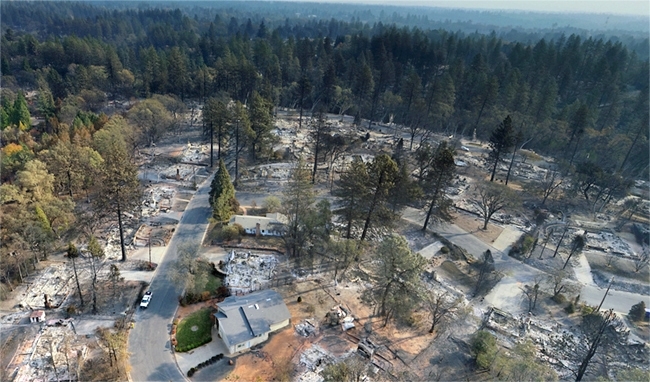Many climate change projections point to impacts that will be felt 50 or 100 years from now. But there are indications the earth is already experiencing rising sea levels, intensifying storms, increasing wildfires and droughts, and warmer oceans and atmosphere, reported Mary Caperton Morton in Science News.
For information about wildfire in California, Morton spoke to Max Moritz, UC Cooperative Extension wildfire specialist in the Bren School of Environmental Science and Management at UC Santa Barbara.
“Warming temperatures are melting snow sooner and drying out vegetation so that we're already seeing longer fire seasons and more available fuel," Moritz said.
In 2017 and 2018, California wildfires killed 147 people, burned 3.5 million acres and destroyed over 34,000 structures in two of the worst fire seasons on record. Wildfires are expected to become more severe across the West.
Governor Newsom is responding to the threat by including in his proposed 2020-2021 state budget $86 million for CALFIRE to boost its firefighting response and $127 million for the Department of Emergency Services to address such disasters, reported the San Francisco Chronicle. The proposed budget will also fund the creation of a new 106-person wildfire safety division to oversee Pacific Gas & Electric Co. and other utilities.
CALFIRE recommends establishing defensible space around homes and building to code with fire-safe materials. For older homes, CALFIRE suggests low-cost retrofitting strategies, including sealing gaps with caulk, weather stripping or fine metal mesh screens; removing dead or dry vegetation from around the house and regularly cleaning leaves and other flammable material from gutters and under decks.
Moritz pointed out that the houses themselves are fuel for wildfire. Community-level fire safety approaches will be needed, he said.
"You've probably seen aftermath photos where a fire has swept through a town and all the homes have burned, but there are still trees standing and green vegetation,” Moritz said. “That's what happens when the homes themselves are the fuel. It's not a land management problem where you should have cleared more shrubland. You can't thin the fuels because the homes were the fuel.”
In a report published in April by UC Agriculture and Natural Resources, Moritz and colleagues also recommend burying power lines, creating water storage facilities for fighting fires, hardening emergency facilities and creating community refuges where people can take shelter.
"A whole suite of risk-reduction measures can be applied at the community scale,” he said. “We need to pay attention to how we lay out communities, with buffer zones between houses and between the community and the surrounding landscape.”
“Building to Coexist with Fire: Risk Reduction Measures for New Development” can be downloaded free at https://anrcatalog.ucanr.edu/Details.aspx?itemNo=8680.
